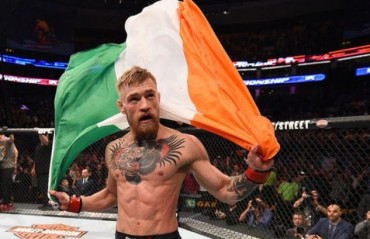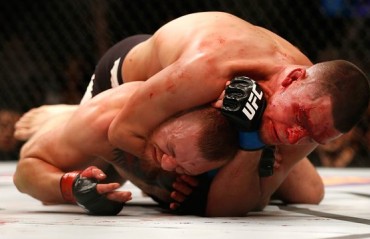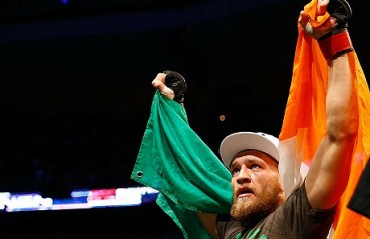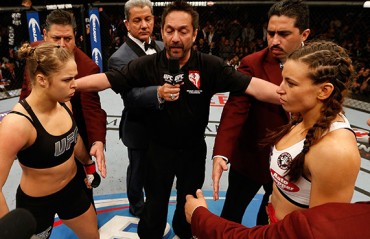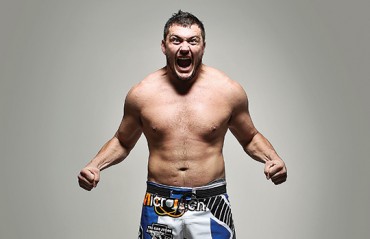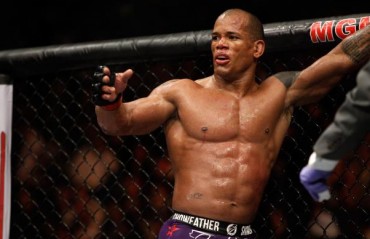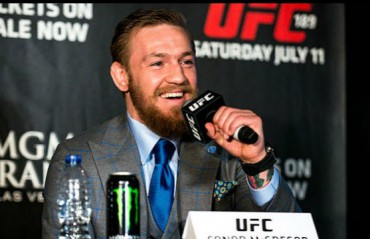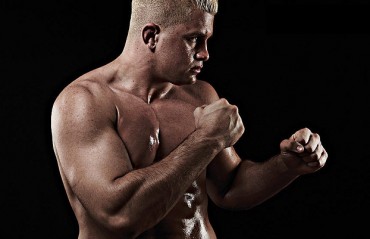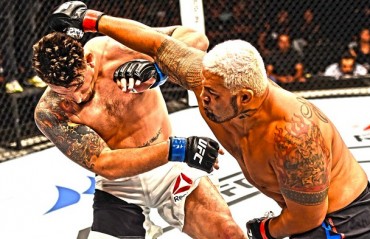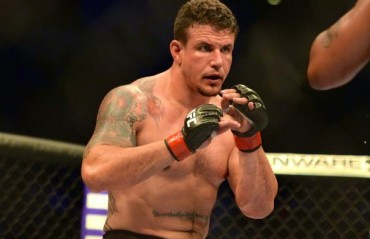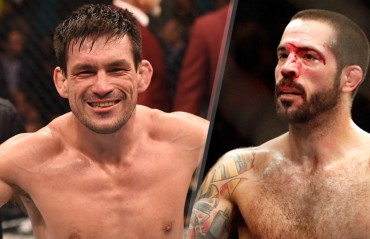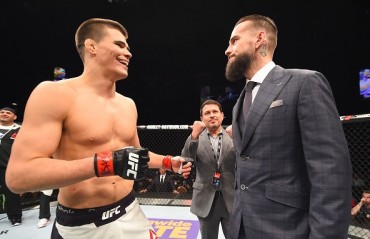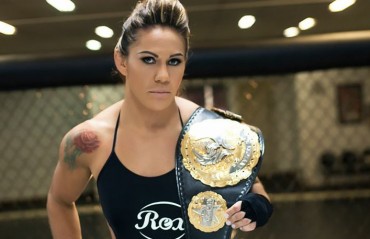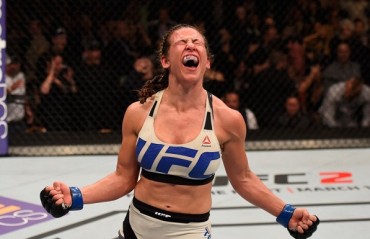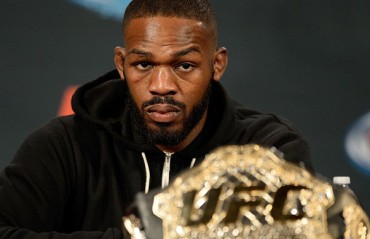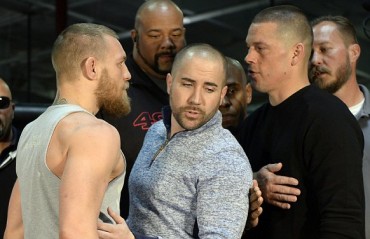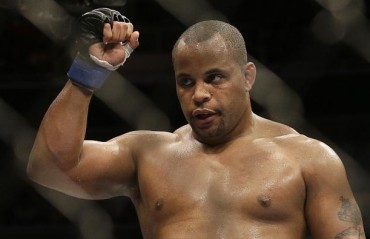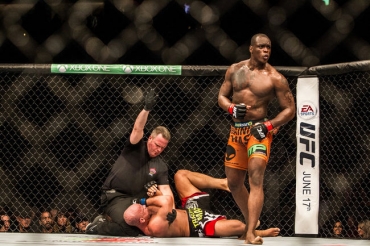DARING'S DREAM: The Incredible Journey of Bharat Kandare -- the First Indian-born UFC Fighter (PART ONE)
- By Chiranjit Ojha

- November 25, 2018
EARLY MORNINGS IN Bhagur, Maharashtra resemble the typical waking hours of nondescript semi-rural small towns across India.
The narrow main road with closed down shops lies still until day has fully broken, disturbed by the occasional bicycle or the honks of a scooter.
The small temples open up to early-riser women who make picking flowers a useful part of their morning-walk routine, ending with a puja.
At the edges of the town, cattle-owners rush throguh their busy hour, milking cows and preparing for timely delivery.
The number of morning joggers is not more than a handful, but they gladly take advantage of the low traffic and the greenery. Sports isn't that big; but there are seizable clusters concentrated around a couple of cricket and football schools, and the International Sports Academy, Bhagur. As the sun begins to float up from the horizon lined with dusty distant hillocks with sparse grass and grey rocks, the fields see athletically inclined youngsters assemble for a morning training session.
Bharat Kandare used to be a part of this very flock. Growing up in this town, he had caught an early fascination for wrestling at the International Sports Academy. He was a natural at it, a scrapper with a stocky build with a penchant for combat sports of all kind. But with Bhagur's sporting environment being largely contained within itself, wrestling was set to have an auxiliary presence in his life. He was set for a regular life, with a steady job as a municipal worker, and a family down the line.
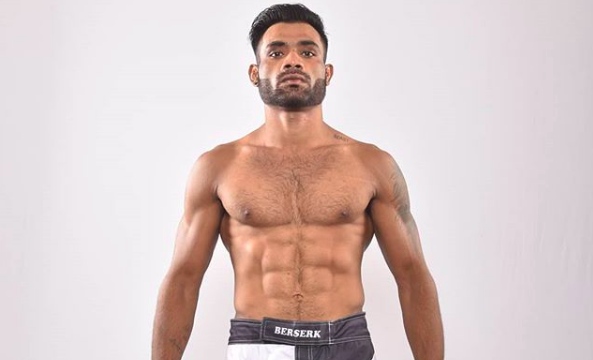
But one day in 2008, two rather unusual men visited the academy, and brought with them a glimpse of a world that Bharat had only heard of in passing, but never experienced the magnitude of.
Those men, and two DVDs, would alter the course of the life of Bhagur's wide-eyed wrestling prospect, setting him on a journey across many countries in a quest to test himself against the best in a new-age, fast-growing combat sport called Mixed Martial Arts.
***
He would wake up before the sun sneaked up from behind the hillocks. He hit the road before the joggers, the priests, the milkmen, his fellow athletes at the sports academy... even the crows.
At 4:30 am, Bharat began his day with a running routine, comprising of calculated variations from a jog to a sprint, designed to push his lungs to their maximum operational capacity. This was followed by some light training; mostly cardio.
By 6 am, he was done with the training. He showered, and showed up for work.
Employed at the Bhagur municipality, he had to start from the bottom. His assignments would often include sweeping the streets, cleaning up neighbourhoods and helping out in constructions. It was hard physical work and the pay just about sustained his needs as a single man living with his family, but Bharat tried to see the positives; it kept him active through the morning, going into the afternoon, when the favourite part of his day would begin.
At 2 pm, he was back at home. He got some rest, showered again, had lunch. He was out of the house in a couple of hours, biking 22 kilometers to the gym where his martial arts training began in earnest. He would spend hours there, working out, sparring, lifting weights, rolling on the mat with partners, repeating drills again and again until he could nail the timing of a new move.
At night, he rode his bike back home, had dinner and fell asleep instantly, only to wake up again before any other soul in the vicinity.
This routine would go on day after day, no matter the weather. He would refuse to skip a trip to the gym under any circumstances; rains, thunderstorms... none of it mattered.
Sometimes his friends and family members would catch him shadow-boxing. "What's this nonsense you're wasting your time with," they would say. "There's no future in that. Focus on your job." But knowing Bharat since childhood, they knew their protests were futile; once he set his mind at something, he pursued it with dogged obsession. He would put on his headphones, blast music into his own ears, and carry on with his training, tuning out the unnecessary noise, lost in his own world.
***
"I didn't even know it as MMA," says Bharat.
Back in 2008, there was almost no MMA on TV in India. Smartphones were yet to hit the market and internet speeds were in their stone age. Indians' association with Mixed Martial Arts was mostly limited to martial arts circles, and a handful of shows like 'Clash of the Champions.' Only a fringe group of fans were aware of the sport; they would read about the sport online, and find DVDs of UFC events in select shadowy corners of the vast DVD markets that had mushroomed in all major cities.
"What I wanted was to take up boxing and kickboxing."
Bharat's chance to do just that arrived when Daniel Isaac and Alan Fernandes paid a visit to the International Sports Academy, Bhagur.
Daniel Isaac is a big name in Indian MMA. Trained in Ishudo from age 5, he went on to become a renowned martial arts instructor who travelled in many contries to conduct seminars and training camps.
In 1990, he opened his own school of martial arts: Daniel Isaac's Indian Ninjutsu Dojo, in Nasik. The institution soon became famous across India and beyond, with its distinct 'Chhaya Sainik' fighting style drawing attendees from a wide area. The school was featured in the Black Belt Magazine, a major martial arts publication in the USA.
Later, he would go on to become the CEO of Super Fight League, and an ordained pastor, teaching the value of peace and restraint as much as strength and discipline in martial arts.
Alan 'The Bull' Fernandes, now a leading MMA administrator and coach in the country, was still an active MMA fighter hailing from Nasik.
Both Isaac and Fernandes were at the forefront of the first generation emergence struggles of MMA in India. In 2000, Isaac founded the All India Mixed Martial Arts Association (AIMMAA), and they had trougle even getting registered (They had to initially register as 'All India Kickboxing Council' since the registrar's office refused to believe there was such a thing as MMA).
In 2004, AIMMAA finally got registered under its own identity, and began sanctioning amateur bouts, mostly organized by regional associates. On 29th February of that year, 'Clash of the Champions I' was held at En Kela High School; the first professional MMA show in India, organized by promoter Jitendra Jain.
Alan Fernandes made his pro debut in the event, knocking out fellow debutant Mir Payan in the second round. Daniel Isaac served as a referee in the main event.
Bharat Kandare started training at the Tiger's Gym & Fight Club, mostly focusing on kickboxing for the first few months. But as he sparred and hit bags, he would notice some of the senior members of the gym undergoing a totally different kind of training.
On a mat laid out at one end of the hall, they were practicing Jiu-Jiutsu holds and chokes. Unlike the flurry of striking action that had drawn Bharat in, these moves were slow, patient - almost like chess - and often came down to intelligence and endurance. The practitioners would often consult video clips to watch a certain movement on a loop, then spent hours attempting to re-create them down to the minutest details.
When Bharat enquired about them, Isaac and Fernandes handed him two DVDs to get him acquainted with the sport of MMA, and the life that a high level fighter has to live.
One DVD contained the main card of UFC 89. The other was a portrayal detailing the workout routines of Dan Henderson, the legendary MMA fighter with a background in Greco-Roman Wrestling who became multi-division champion in Pride and Strikeforce, and fought for titles in UFC multiple times.
It was as diverse an introduction to MMA as Bharat could have hoped for. He watched in awe as Marcus Davis submitted Paul Kelly with a guillotine choke, Luiz Cane got a TKO over RT Sokoudjou, Keith Jardine and Brandon Vera had an absolute war over three rounds and Michael Bisping dominated Chris Leben.
But it was the Dan Henderson training video that was the ultimate hook. As Bharat watched the legend talk about transition from wrestling to MMA, diet and lifestyle, demonstrate training methods with ropes and heavy balls, something clicked.
This was what he was looking for. This was what he would do. He would travel the world and compete with the toughest human beings on the planet.
Dan Henderson instantly became an idol figure for Bharat Kandare. And he decided to become a professional MMA fighter.
Under the watchful eyes of his mentors, his training schedule went through a huge transformation. He was now spending long hours on the mat, cutting his teeth into Jiu-Jiutsu. Wrestling was once again one of his major activities, and his striking was slowly developing.
Daniel and Alan, who saw potential in the 19 year old's undivided dedication to learning and aggressive, fearless approach to fighting, supported him in every way possible. They left no stone unturned in pushing him ahead; Alan even shared his own protein powder with Bharat when he couldn't afford his own. Bharat soon became a star prospect in their fold.
It wouldn't be long before he would get his first opportunity to test himself in a red-blooded MMA match.
***
World Absolute Fighting Championship was a Russian MMA promotion that began in 2001, and gained a good amount of traction in the Russian-belt countries like Kyrgyzstan and Kazakhstan.
While Central Asia has always had a fondness for combat sports, professional MMA was still taking its first steps in the Steppes. So in order to lure in new fans, WAFC was doing a lot of introductory-level shows in the region. One such even they planned was a nation vs nation card.
WAFC - Team Kazakhstan vs Team India was to be held in Almaty, Kazakhstan on January 31st, 2010. The event was designed to get new Kazakh fans to become regular followers of the promotion; pitting young domestic fighers who were just starting out with one or two bouts in their career, against inexperienced Indian fighters.
Daniel Isaac and Alan Fernandes saw this as a good learning opportunity for their students. They themselves had held similar events in the past (Clash of Champions II - India vs Great Britain, 2005) and knew how it went; the odds were always in favour of the host country. But these events were a good way to introduce young fighters to the harsh realities of the sport. Especially since professional MMA events in India were not available at that time; Clash of Champions had wrapped up after its sixth event in 2007.
Five Indian fighters were signed for the event, and all of them were debutants. Utama Tailhades, Tombing Gintyanmanga, Bharat Kandare and Sati Sanil were in the undercard, while Anup Kumar was taking on Begnar Amanbayev (1-0) in the main event.
Bharat was visibly excited as he flew over Pakistan, Northern Afghanistan, descending on the Almaty International Airport with a picturesque setting, its old runway stretching towards the Ile-Alatau National Park and the snowy Pik-Talgar.
Parts of Almaty displayed the trendy aesthetics of a European city. But other parts, and the suburbs, had box-like apartment buildings with fading paint; remnants of the Soviet era. The young Indian fighters, some in their late teens, were fish out of water in this new environment.
Bharat tried hard to ignore his surroundings. He had been training for a year and a half for this moment; his professional debut as an MMA fighter. He knew the odds were against him, he was facing a significantly larger fighter in Nariman Musaev, who had just earned a first round TKO in his debut. He knew the promoters agreed to this match-up because they thought he was easy work. The fight was in Lightweight; which he knew was not to be the weight class of choice for his 5 foot 7 inch frame. But he accepted the fight in an instant, without even having to think twice. He was going to charge in and look for maximum impact.
Alan Fernandes, who would be in his corner during the fight, was impressed by his approach, and gave him a nickname. 'The Beast'. It was a coincident that another MMA fighter shared that nickname; Derrick Lewis, who would go on to fight Daniel Cormier for the UFC Heavyweight Championship.
Even more of a coincidence is the background they share: Lewis used to be a Municipal worker too, cleaning trahs in his home city.
The night of the fight arrived, with the fights taking place in a half-packed mid-sized hall with a boxing-type ring instead of a cage. And the Indians fared badly. All five of them lost, rather badly. All their losses came in the first round, via submission. Sati, Tombing and Utama would never fight professionally again. Bharat charged into the fight, and got submitted via armbar. Anup Kumar, who would go on to have an illustrious career in SFL, also tasted defeat on his debut.
The result was nothing unexpected. Bharat knew that the bout was to gain experience, he was pitted in the worst match-up possible for a debutant against a larger opponent in a higher weight class. The preparation for the fight was also minimal. But still, the defeat stung.
Once back home, he was more determined than ever. He had seen what it was like, and he was not going to rest till he got his hand raised.
So as the town of Bhagur went about its slow cycle of semi-rural sustenance, Bharat Kandare woke up before dawn and went for his run. He showed up at work, cleaned the streets with long-handled brooms, under the burning sun. In the afternoon, he trained in MMA, pushing himself harder than ever, every day, over and over again until every muscle of his body stretched itself to form tighter, stronger shapes.
It was time to chase that W.









